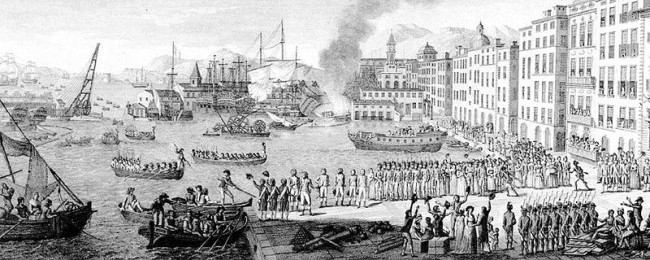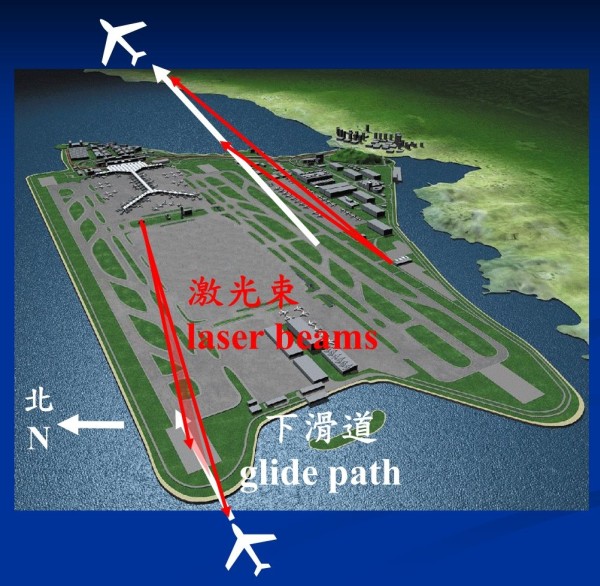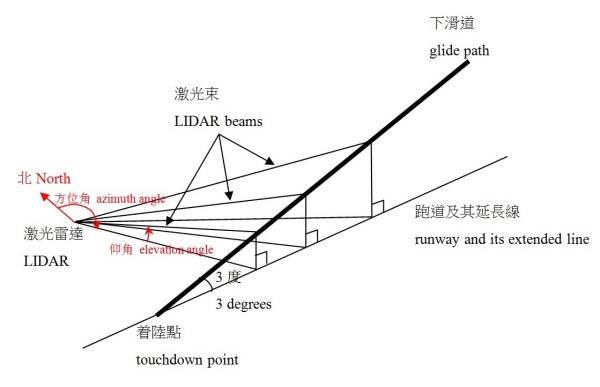Innovation (1)
21 July 2011
Earlier I shared with colleagues my reflection about "innovation". I would also like to talk about it here.
Lately, the word "innovation" has been frequently mentioned, even in the context of the future development of Hong Kong. With innovation, we would be energized, able to make progress and not being marginalized. Indeed in the current knowledge-based world, innovation is essential.
In the past, many people (including myself) may have the following concept - innovation means a sudden realization or epiphany, or the light bulb which frequently appears in cartoons, or even something out of the blue. Innovation seems incomprehensible and unreachable, and only belongs to those talented few.
A few years ago, when I studied management at the Columbia University, one of the lectures on "Strategic Intuition" led me to re-think what "innovation" really was. Professor William Duggan made reference to many familiar examples to illustrate that innovation was not something which came from nowhere, and it was not unreachable. These examples range from how Napoleon won his first important war (the Siege of Toulon) [1], to how Copernicus established "Heliocentrism" [2], and how Bill Gates set up the Microsoft kingdom etc. Professor Duggan's basic concept is: every result of innovation is based on existing foundation, it is a re-combination of existing knowledge into something which does not exist before.

The Anglo-Spanish fleet entering Toulon, 1793[1]
Taking the example of the Observatory's development of the LIDAR [3] windshear [4] alerting system: in the past, LIDAR was only used for research studies into aircraft wake vortices or atmospheric dispersion; we are the first team to apply LIDAR in alerting windshear occurring in non-rainy conditions at an airport. In the past, radars scan the sky either using fixed elevation angles or fixed azimuth angles, but neither of them could directly scan the glide paths where the aircraft travels during landing or take-off; our system utilizes a new method to scan the airport glide paths by changing the elevation and azimuth angles simultaneously in order to directly detect the headwind encountered by the aircraft on the glide path. In the past, some scientists computed windshear from headwind data retrieved from the aircraft "black box", but no one had applied such method on radar data. Our innovation combines the above three "pasts" for the first time. Comparison with windshear reports from pilots and data from aircraft "black box" shows that our new method detects windshear more accurately than previous methods. After three years of research by my colleagues, we started to use our self-developed LIDAR windshear alerting system in 2005. Subsequently, in an article of the International Civil Aviation Organization's Journal, the U.S. Federal Aviation Administration pointed out that the LIDAR windshear alerting technique was proven in Hong Kong [5].


The LIDAR system developed by the Observatory utilizes laser beams
to directly detect windshear experienced by aircraft over the glide path
Inspired by Professor Duggan, I understand that innovation must have a firm foundation in the first place so that we could learn the future from the past. As Newton said, we are all "standing on the shoulders of giants" [6]. Taking the example of the LIDAR, we possess knowledge of the three "pasts": hardware technology of LIDAR, conventional radar scanning technique, and the method of computing windshear from aircraft "black box" data, so that we have solid foundation for development of the LIDAR windshear system. If we would like to pull these different elements together to facilitate their re-combination, knowledge sharing should be promoted. Of course, we would also need to have "strategic intuition" mentioned by Professor Duggan. But what is this?
Professor Duggan explained [7]: apart from possessing examples from past experience, strategic intuition also involves three more steps: (1) presence of mind, i.e. having concentration with a clear and freed mind; (2) the flash of insight itself where the stored elements are pulled together to form a new combination; and (3) to have resolution, to bring the new combination into fruition. In other words, armed with presence of mind, it is then possible to have the flash of insight to comprehend the innovative combination. But only comprehension is not enough, the determination and courage to "make things happen" is equally important. Have you ever thought about: when Bill Gates and his partner Paul Allen first established Microsoft, Gates took 64% of the company since he wrote a large part of their first personal computer software? The ability to make things happen clearly paid off!
CM Shun
[1] http://en.wikipedia.org/wiki/Siege_of_Toulon
[2] http://en.wikipedia.org/wiki/Nicolaus_Copernicus
[3] LIDAR stands for "LIght Detection and Ranging" (http://en.wikipedia.org/wiki/LIDAR)
[4] Windshear refers to the headwind change encountered by an aircraft over the glide path (interested readers please refer to the windshear and turbulence pamphlet: http://www.hko.gov.hk/publica/gen_pub/windshear.pdf)
[5] Christopher Keohan (2007): "Ground-based wind shear detection systems have become vital to safe operations", ICAO Journal, Volume 62, November 2007 (http://www.icao.int/icao/en/jr/2007/6202_en.pdf)
[6] http://en.wikipedia.org/wiki/Standing_on_the_shoulders_of_giants
[7] William Duggan (2007): "Strategic Intuition: The Creative Spark in Human Achievement", Columbia University Press, 192 pp.
Lately, the word "innovation" has been frequently mentioned, even in the context of the future development of Hong Kong. With innovation, we would be energized, able to make progress and not being marginalized. Indeed in the current knowledge-based world, innovation is essential.
In the past, many people (including myself) may have the following concept - innovation means a sudden realization or epiphany, or the light bulb which frequently appears in cartoons, or even something out of the blue. Innovation seems incomprehensible and unreachable, and only belongs to those talented few.
A few years ago, when I studied management at the Columbia University, one of the lectures on "Strategic Intuition" led me to re-think what "innovation" really was. Professor William Duggan made reference to many familiar examples to illustrate that innovation was not something which came from nowhere, and it was not unreachable. These examples range from how Napoleon won his first important war (the Siege of Toulon) [1], to how Copernicus established "Heliocentrism" [2], and how Bill Gates set up the Microsoft kingdom etc. Professor Duggan's basic concept is: every result of innovation is based on existing foundation, it is a re-combination of existing knowledge into something which does not exist before.

The Anglo-Spanish fleet entering Toulon, 1793[1]
Taking the example of the Observatory's development of the LIDAR [3] windshear [4] alerting system: in the past, LIDAR was only used for research studies into aircraft wake vortices or atmospheric dispersion; we are the first team to apply LIDAR in alerting windshear occurring in non-rainy conditions at an airport. In the past, radars scan the sky either using fixed elevation angles or fixed azimuth angles, but neither of them could directly scan the glide paths where the aircraft travels during landing or take-off; our system utilizes a new method to scan the airport glide paths by changing the elevation and azimuth angles simultaneously in order to directly detect the headwind encountered by the aircraft on the glide path. In the past, some scientists computed windshear from headwind data retrieved from the aircraft "black box", but no one had applied such method on radar data. Our innovation combines the above three "pasts" for the first time. Comparison with windshear reports from pilots and data from aircraft "black box" shows that our new method detects windshear more accurately than previous methods. After three years of research by my colleagues, we started to use our self-developed LIDAR windshear alerting system in 2005. Subsequently, in an article of the International Civil Aviation Organization's Journal, the U.S. Federal Aviation Administration pointed out that the LIDAR windshear alerting technique was proven in Hong Kong [5].


The LIDAR system developed by the Observatory utilizes laser beams
to directly detect windshear experienced by aircraft over the glide path
Inspired by Professor Duggan, I understand that innovation must have a firm foundation in the first place so that we could learn the future from the past. As Newton said, we are all "standing on the shoulders of giants" [6]. Taking the example of the LIDAR, we possess knowledge of the three "pasts": hardware technology of LIDAR, conventional radar scanning technique, and the method of computing windshear from aircraft "black box" data, so that we have solid foundation for development of the LIDAR windshear system. If we would like to pull these different elements together to facilitate their re-combination, knowledge sharing should be promoted. Of course, we would also need to have "strategic intuition" mentioned by Professor Duggan. But what is this?
Professor Duggan explained [7]: apart from possessing examples from past experience, strategic intuition also involves three more steps: (1) presence of mind, i.e. having concentration with a clear and freed mind; (2) the flash of insight itself where the stored elements are pulled together to form a new combination; and (3) to have resolution, to bring the new combination into fruition. In other words, armed with presence of mind, it is then possible to have the flash of insight to comprehend the innovative combination. But only comprehension is not enough, the determination and courage to "make things happen" is equally important. Have you ever thought about: when Bill Gates and his partner Paul Allen first established Microsoft, Gates took 64% of the company since he wrote a large part of their first personal computer software? The ability to make things happen clearly paid off!
CM Shun
[1] http://en.wikipedia.org/wiki/Siege_of_Toulon
[2] http://en.wikipedia.org/wiki/Nicolaus_Copernicus
[3] LIDAR stands for "LIght Detection and Ranging" (http://en.wikipedia.org/wiki/LIDAR)
[4] Windshear refers to the headwind change encountered by an aircraft over the glide path (interested readers please refer to the windshear and turbulence pamphlet: http://www.hko.gov.hk/publica/gen_pub/windshear.pdf)
[5] Christopher Keohan (2007): "Ground-based wind shear detection systems have become vital to safe operations", ICAO Journal, Volume 62, November 2007 (http://www.icao.int/icao/en/jr/2007/6202_en.pdf)
[6] http://en.wikipedia.org/wiki/Standing_on_the_shoulders_of_giants
[7] William Duggan (2007): "Strategic Intuition: The Creative Spark in Human Achievement", Columbia University Press, 192 pp.